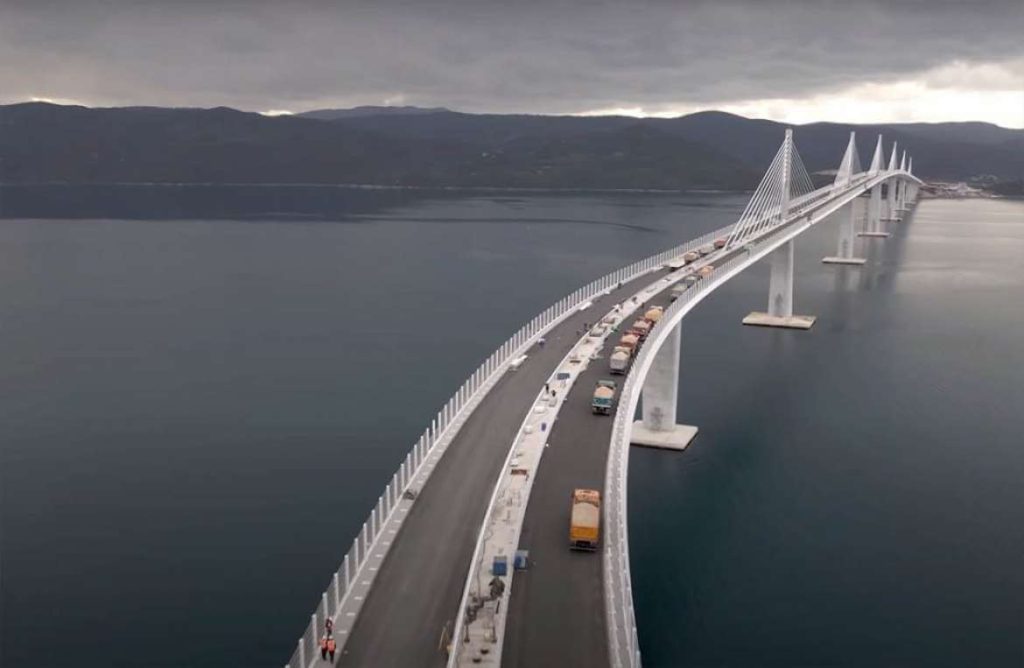Retired HRT journalist Branka Šeparović once connected the mainland with the Pelješac peninsula with a convoy of boats and thus sent a message to the authorities in Zagreb and Brussels that it was high time to unite the ‘split’ Croatia and the European Union. Šeparović’s ideas shook the structures, and the idea was finally initiated with joint money from the EU coffers, reports Slobodna Dalmacija.
Branka Šeparović warned for a long time on behalf of the association ‘Pelješki Most’ that Croatia is the only country in the world whose land territory is split in two and that constructing a bridge is of strategic interest to Croatia but also to the EU because Croatia will through further integrations become part of the Schengen area.
Branka Šeparović now points to another problem. According to her, ‘Most Pelješac’ is a complete misnomer that does not carry any message. On the contrary, it is a project of exceptional importance for the local population, Croatia, and the continent.
“Pelješac is not even a toponym in that sense; it is just an ordinary board placed until the right name is found. Technically and bureaucratically, ‘Hrvatske ceste’ has all business contracts and technical documentation under the name ‘Most kopno – Pelješac.’ Therefore, the location of the construction is indicated, and not the name of the bridge, which was chosen for some reason. The name of the bridge, which belongs to public projects, is not given by the state companies that participated in its realization, such as ‘Hrvatske ceste’, but by the Government of the Republic of Croatia,” says Šeparović, who believes that such an important project for the entire European Union, all the more so because next year Croatia will undoubtedly become part of the Schengen area, to which the construction of this essential infrastructural facility contributed in the first place, must undoubtedly be seen in the name of the bridge.
“That’s why my suggestion is to name the bridge ‘Europa.’ It is a land raised from the sea and a union of differences in mutual harmony, understanding, and acceptance. Europe, with two percent of the world’s population and 11 percent of the planet’s territory, welcomes and transmits the further reaches of human genius with wide-open doors,” explains Šeparović, who disagrees with the name Most Pelješac, which, she points out, is not even grammatically correct.
“‘Pelješki most’ is logical and correct, but everything points to the fact that the ‘Europa’ bridge has no alternative. Europe is the wider homeland of the Croatian genius Faust Vrančić, who, from the end of the fifteenth to the sixteenth century, gave it, among other inventions, the suspension bridge. All the bridges that have been built so far, including this European bridge in Croatia, remember their constructor that way, as well as the one that should be called Europa because it is placed in the five most strategically important points on our continent,” claims Branka Šeparović.
The European Union has already paid respect to this colossal project, so it is time to reciprocate, added Šeparović.
“All paper bills have a picture of a bridge on their back as a symbol of connection. Europe means freedom, justice, and peace. This was written back in 1949 in Pax Europa. There is no alternative for Croatia in this sense. The great European visionaries Alcide de Gaspari, Conrad Adenauer, and Robert Schuman are quite clear: Europe is an alliance in which no one loses, and every part of it, in this unity of diversity – gains. That is why the most beautiful Croatian bridge deserves to be named ‘Europa,'” Šeparović is convinced, and once again warned that the current name is technical and that a mature decision must be made as soon as possible. In her opinion, the bridge’s name after the Old Continent – has no alternative.
She adds that Croats will travel to the world through that bridge, and Europeans will arrive here in large numbers and continue further south, which will be the case already this summer.
For more, check out our lifestyle section.








